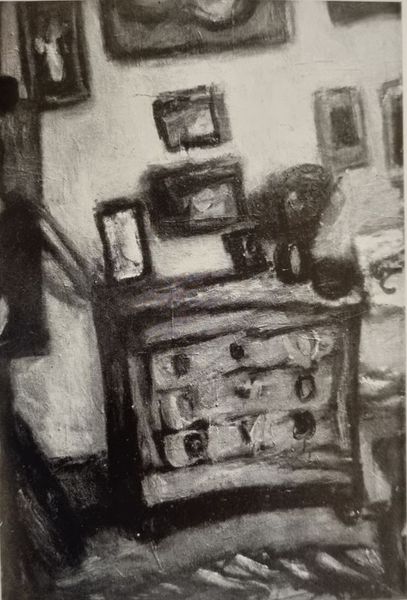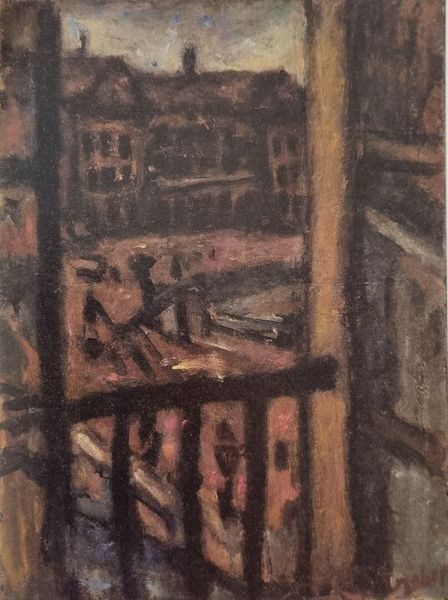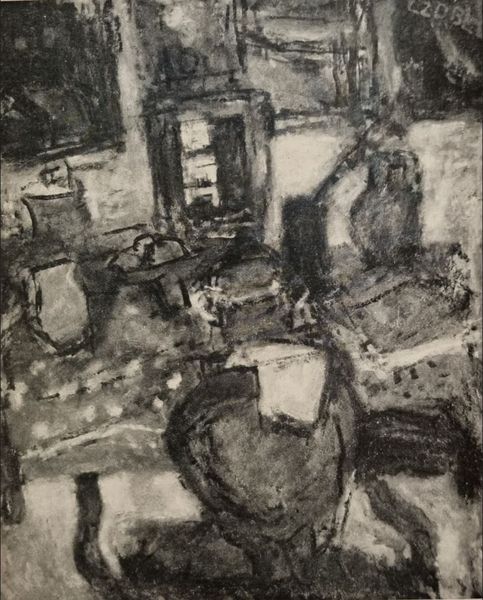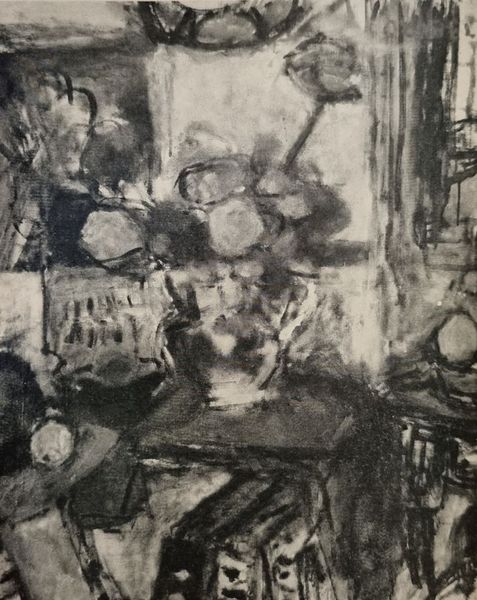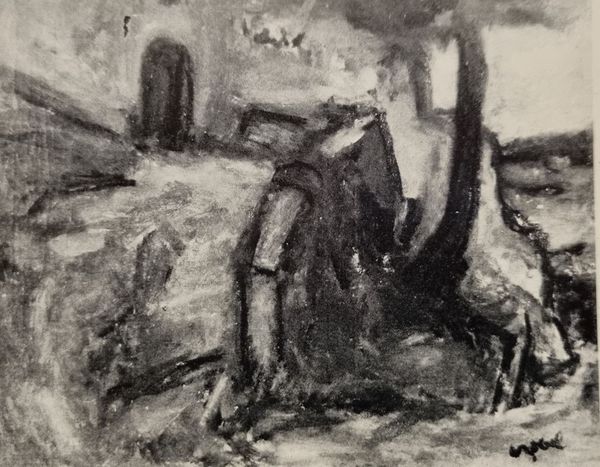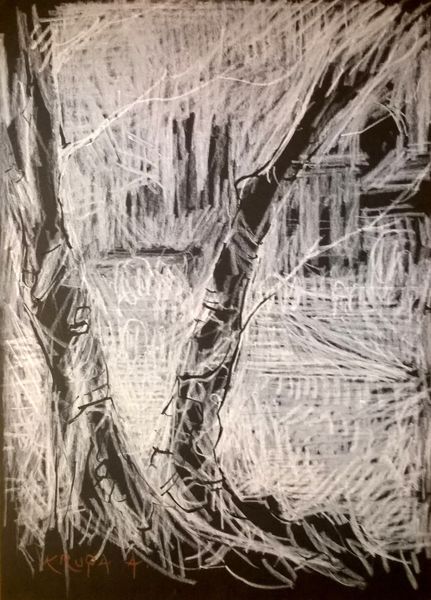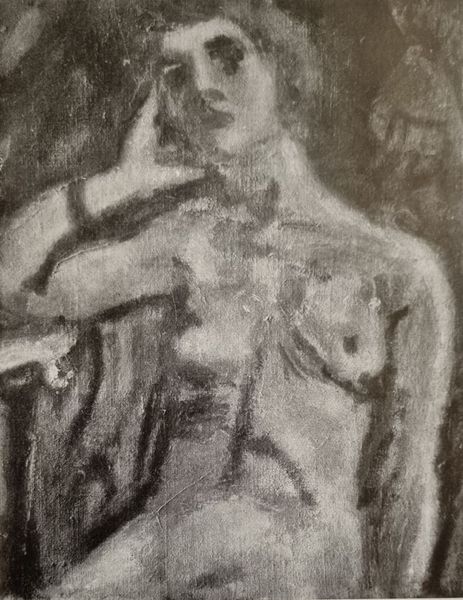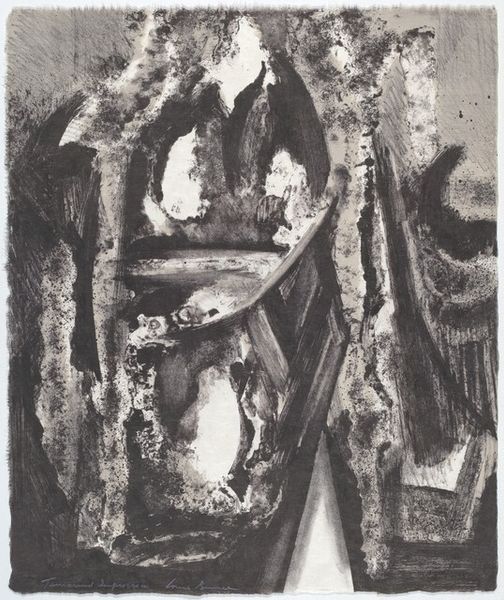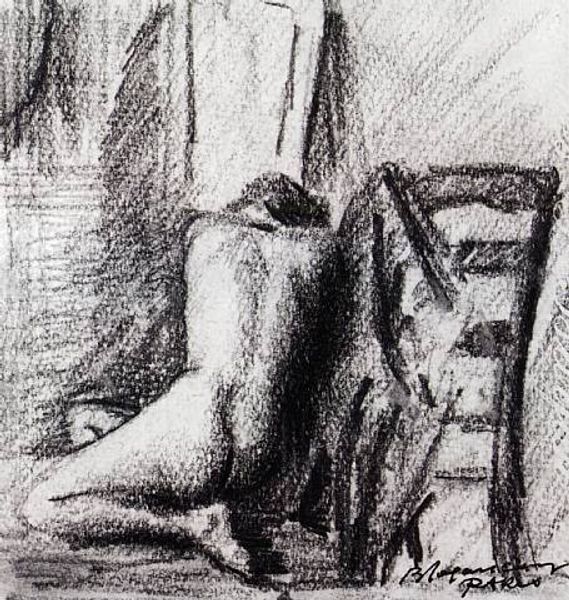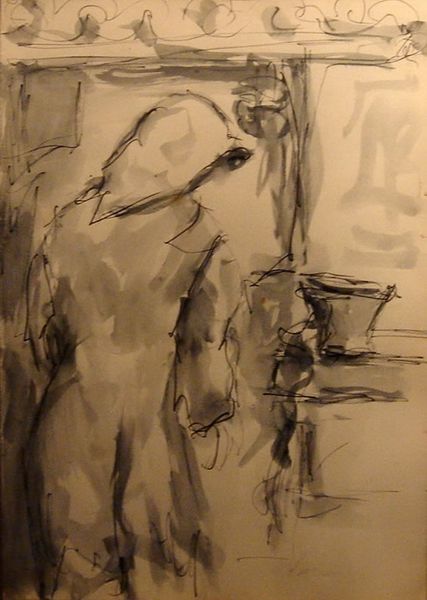
painting, oil-paint
#
painting
#
oil-paint
#
charcoal drawing
#
charcoal art
#
pencil drawing
#
expressionism
#
charcoal
Copyright: Bela Czobel,Fair Use
Curator: This is Czóbel Béla's "Virágcserép Szobor Állvánnyal 1932," oil on canvas, painted during his expressionist phase. Editor: My immediate reaction is how stark and subdued the piece feels. The limited palette really focuses attention on the forms themselves. Curator: Absolutely. Czóbel, after his time with the Fauves, moves towards a darker, more introspective style. This piece reflects that shift. Notice the traditional subject, the flower pot and sculpture atop the table. But also take a moment to reflect on its overall effect and lack of charm. The painting doesn't charm; instead, it prompts analysis. Editor: And what an analysis! Just looking at how he's applied the paint, thick and almost brutal, especially on that bouquet… There's a definite tension between the fragility of flowers and the harshness of the brushwork. Even in reproduction, the materiality is quite assertive. Curator: Which relates to the socio-political context of that period. Post-war Hungary, with its anxieties and uncertainties, deeply influenced artists like Czóbel. You see a deliberate move away from decorative art to something that is raw and truthful, or strives to be at least. An entire generation was interested in truth at the time. This piece becomes a commentary. Editor: I see that. But aesthetically, it’s also about line and form. The harsh verticals and horizontals almost pin down the chaotic burst of energy implied in the sculptural flora. Curator: Very well observed. The internal tensions of post-war life playing out here visually, between what can't be controlled and what must be. A very internalized tension, I must stress. There's nothing particularly charming or pleasant about it. Editor: An excellent and succinct insight, Curator. It makes one reconsider seemingly mundane and commonplace imagery. Curator: Indeed. Thank you for lending your critical insight today.
Comments
No comments
Be the first to comment and join the conversation on the ultimate creative platform.
